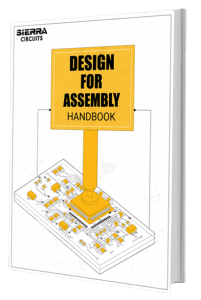Design for Assembly Handbook
Our DFA Handbook outlines a reliable system to help you reduce cost and speed up the production of your prototype PCBs.
Design choices go a long way in ensuring the quality and reliability of the end product. The Design for Assembly Handbook helps you avoid assembly delays and extra costs by checking:
- The manufacturer’s requirements to assemble your PCB
- Common DFA issues
- Common PCB assembly defects
- Factors that impact the cost of the PCBA
What is DFA?
DFA techniques are intended to arrive at a simpler product structure and assembly system.
Design for assembly includes a distinct design methodology that considers product functionality along with the cost and efficiency of the product assembly process.
The objectives of design for assembly
- The components selected in the BOM are available.
- DFA checks to ensure components are neither obsolete nor near end-of-life.
- The components’ manufacturing part numbers (MPN) must match with the footprint of the PCB.
- The component placement, sizes, and distances between the components are compatible with the assembly and manufacturing processes.
- The solder mask and solder paste layers are correct and meet the production requirements.
- The DNI (do not include) components are correctly marked and verified.
Also inside this Design for Assembly Handbook:
- Recommended layout for components
- Common PCB assembly defects
- Factors that impact the cost of the PCB assembly, including:
- Component packages
- Board assembly volumes





